
On July 29th, Moonbeam Chinese community manager Yuki participated in the AMA of the BML community, sharing the highlights of Moonbeam’s success in the Kusama slot auction, the difference between Moonbeam and other Polkadot smart projects, and three ways for the community to participate in Moonbeam , and the strategy of Moonbeam's current stage (governance stage).
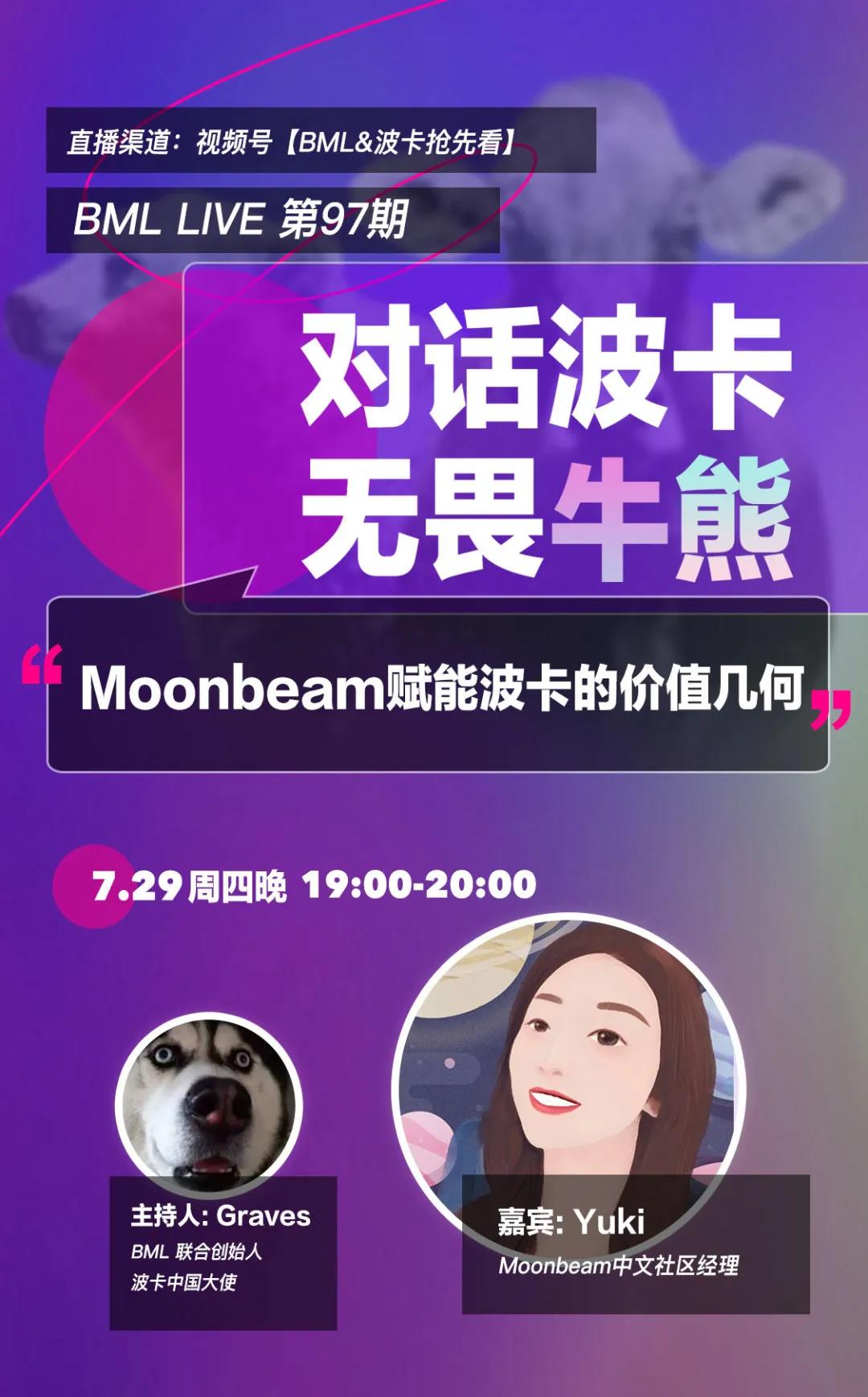
The following is the text content of this AMA:
Moderator: First of all, please give us a brief introduction of yourself and the project.
Yuki: Hello, everyone. I am Yuki, the Chinese community manager of Moonbeam. The Moonbeam team has a strong cultural diversity. The members are mainly located in North America and Europe. I am very happy to introduce Moonbeam to you today.
Moonbeam is a smart contract platform that is fully compatible with EVM. Our goal is to create the simplest development environment, allowing developers to easily develop decentralized applications suitable for multiple chains.
The Moonbeam project is developed on the Substrate framework, and Substrate is also the underlying technology for developing Polkadot and Kusama networks. Because of the consistency of technology, Moonbeam will deploy the project in Polkadot. Of course, we have been following the development of Polkadot. First, we took a slot on the Kusama network to build Moonriver, the parachain of Moonbeam. After the Polkadot network opens slot auctions, Moonbeam will also participate in the Polkadot network auction.
Moonbeam was put into development at the end of 2019. The initial idea of developing in Polkadot was that it was very convenient to develop projects in Substrate, and many developers also held the same view as us. However, the fact that the Polkadot ecology itself does not support Ethereum will also limit the expansion of the ecological boundary. The advantage of our project is to move the very mature development tools that have been running on Ethereum to the Polkadot ecosystem, and to make Substrate compatible with Ethereum.
In September 2020, Moonbeam launched its exclusive test network, Moonbase Alpha Net, which is consistent with the Rococo test network. Simulate the ecological environment of the parachain, which is convenient for collectors and project parties to test and deploy first. In Moonbase Alpha Net, we have more than 300 developers who serve as node supporters to assist in the operation of the test network. At present, more than 150 projects have announced the integration of Moonbeam and passed the deployment test on the testnet.
Moonbeam received grants from the Web 3 Foundation in summer 2020. And in the last round of financing, it received support from Coinbase Ventures and Binance Labs, as well as Coinfund, Haskkey, Distributed and IOSG.
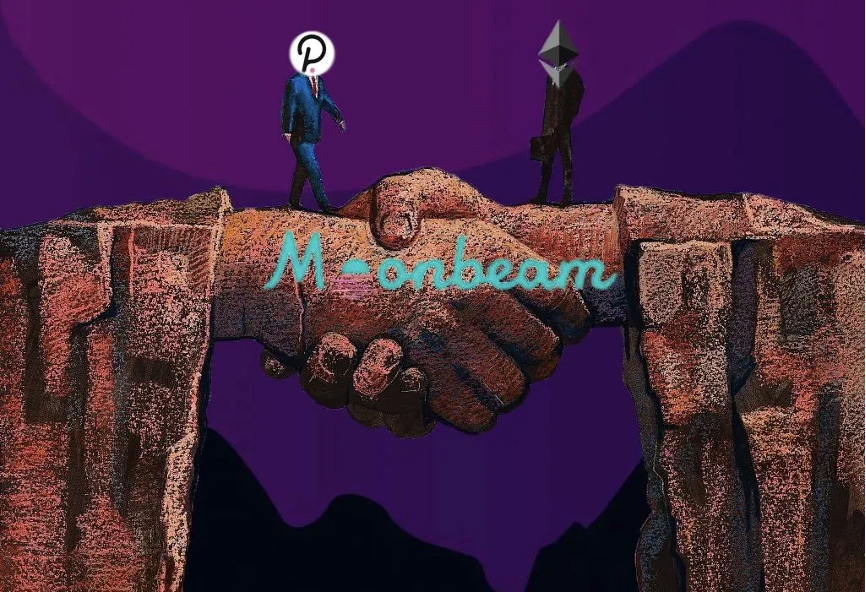
Moderator: Moonbeam jumped up in the Kusama slot auction, what are the highlights that attracted everyone to vote?
Yuki: The blockchain is gradually changing from one chain to multiple chains. While the blockchain project is deployed in Ethereum, it will also expand to more EVM-compatible blockchains. For the project side, only one development cost is required to implement simultaneous deployment on multiple chains.
Moonbeam can realize a natural bridge for project parties to deploy code in Polkadot. The Polkadot ecology is another ecology different from the Ethereum environment, which can help projects expand their business boundaries.
Moonbeam's strategy is to become a developer-oriented infrastructure platform and deploy appropriate development tools from the perspective of developers. For example, developers of Defi hope to have a decentralized price feeding tool, which is an oracle. We have also made priority deployments for this, and now developers can freely use oracles such as Chainlink and Band Protocol.
Some developers hope to see the execution information compatible with EVM, and we have also made priority deployment. You can see 2 block browsers in Moonbeam, Blockscout compatible with EVM and Subscan, a Polkadot browser, and you can also view them on our nodes. to debug RPC.
There are many similar examples, so you can see many low-level tool projects in Moonbeam's partner landscape, such as The Graph, Covelant, etc. We also pay attention to collecting feedback from developers to continuously improve the tools in the ecosystem.
However, the efforts we and the developers have made are ultimately aimed at enabling users to have a better decentralized experience and enabling nodes in the ecosystem to have better services. On the end-user side, you only need to open familiar wallets, such as MetaMask, Math Wallet, etc., to play Polkadot ecological projects, or if you feel that the fees for playing on other chains are too expensive, Moonbeam will also be an affordable one. choose.
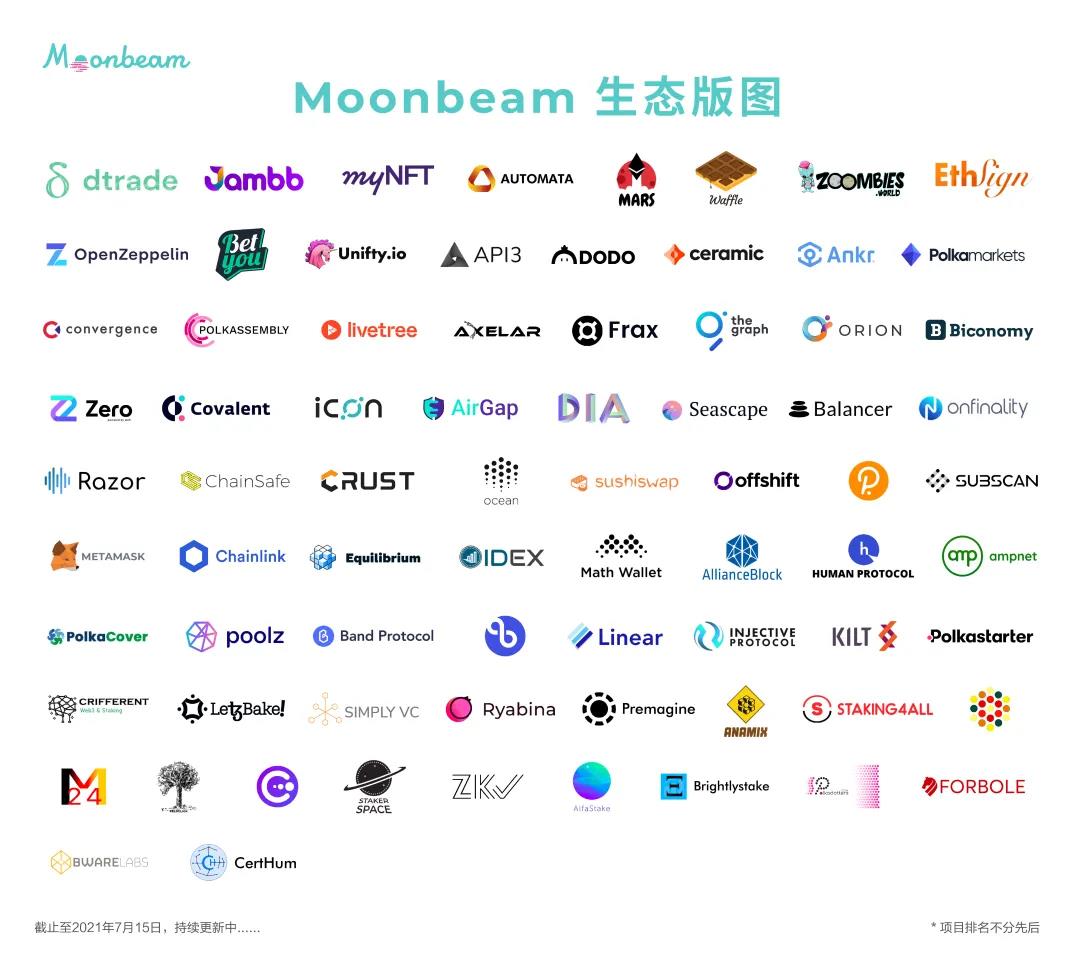
Moderator: What is the difference between Moonbeam and other smart contract projects on Polkadot?
Yuki: EVM itself is very independent, and it was not designed to be compatible with Substrate. This is also an opportunity for Moonbeam to enter. For developers, he can use the same set of code base and technology to implement multi-chain deployment.
The original intention of Moonbeam was to create a convenient development platform on Polkadot for developers who are familiar with blockchain development. In addition to being compatible with Web 3, Moonbeam will also support the development tool ecology of Solidity and Ethereum, such as account structures, signatures, development tools, etc. similar to Ethereum.
As far as we know, Moonbeam is the first to achieve such a high level of compatibility with Ethereum in the Polkadot ecosystem. Our technical advantages have also attracted a group of developers who want to expand the ecology in Moonbeam, or become a native project of the Moonbeam ecology.
Moderator: How can the community participate in Moonbeam?
Yuki :
# Moonbeam Global Ambassador Program
Moonbeam launched the "Moonbeam Global Ambassador Program" in January 2021. Within 8 months, more than 700 ambassadors have joined Moonbeam, and there are more than 1,600 potential ambassadors. Moonbeam ambassadors are located in China, the United States, Italy, Australia, Spain, Vietnam, etc. 13 countries. With the help of ambassadors, Moonbeam is one of the few projects with multilingual versions of its technology.
👉 Moonbeam Ambassador Program|One step at a time! Application guide taught by the current ambassador
👉 Moonbeam Ambassador Program|One step at a time! Application guide taught by the current ambassador
# Contribute code to the Moonbeam open source project
Moonbeam is a project developed based on completely open source principles, and all source codes can be browsed and downloaded on GitHub.
This also means that developers can provide Commit to Moonbeam code by initiating a Pull Request. If the bug bounty is attached to the provided code fixes and accepted by the development team, the corresponding incentives provided by the Moonbeam Foundation can be obtained.
Interested developers can browse Moonbeam's GitHub:
https://github.com/PureStake/moonbeam
# Develop and deploy projects with Solidity on Moonbeam
For most developers, the most direct way to participate in the Moonbeam ecosystem is to develop projects on its platform, or to deploy or migrate existing projects on the Ethereum chain to Moonbeam.
Interested friends can learn more about how to start developing on Moonbeam through the Moonbeam developer documentation.
Interested friends can learn more about how to start developing on Moonbeam through the Moonbeam developer documentation.
https://docs.moonbeam.network/cn/
Moderator: At what stage is Moonbeam currently? When can users experience the product?
Yuki: Moonriver is currently in the deployment stage of preparation for launch. You can understand this process as a transition from complete centralization to decentralization, from no functions to various on-chain governance and EVM compatibility. Similar to most Polkadot projects, we divide the deployment phase into 5 steps: centralization, delegated proof of stake, governance, removal of Sudo, and full activation of Moonriver. We enter phase two this week: the governance phase.
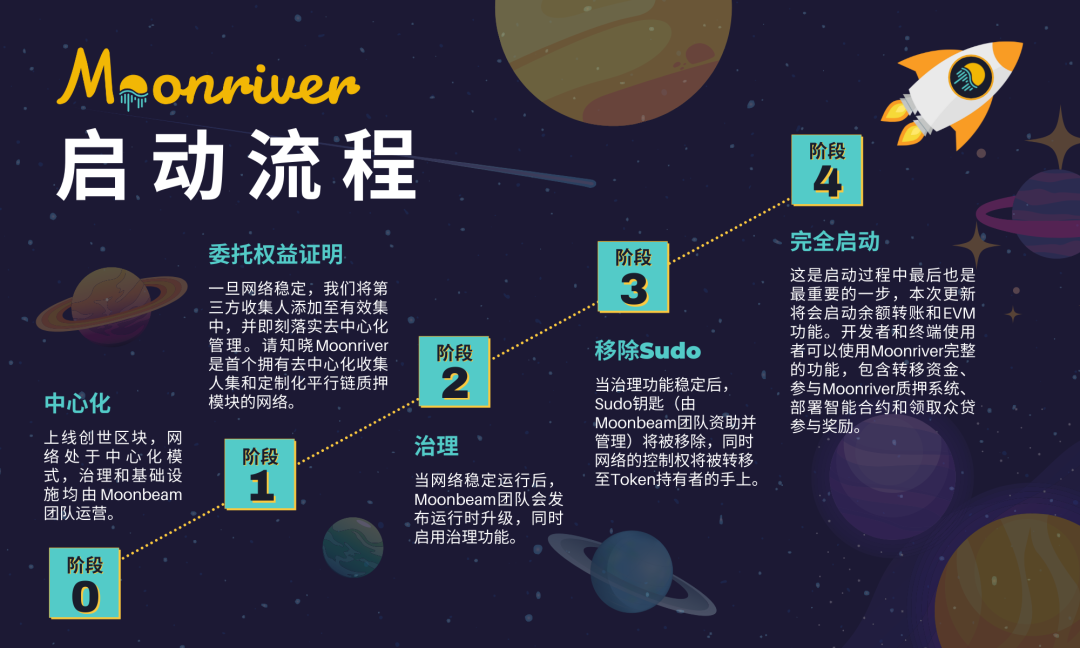
About Moonbeam
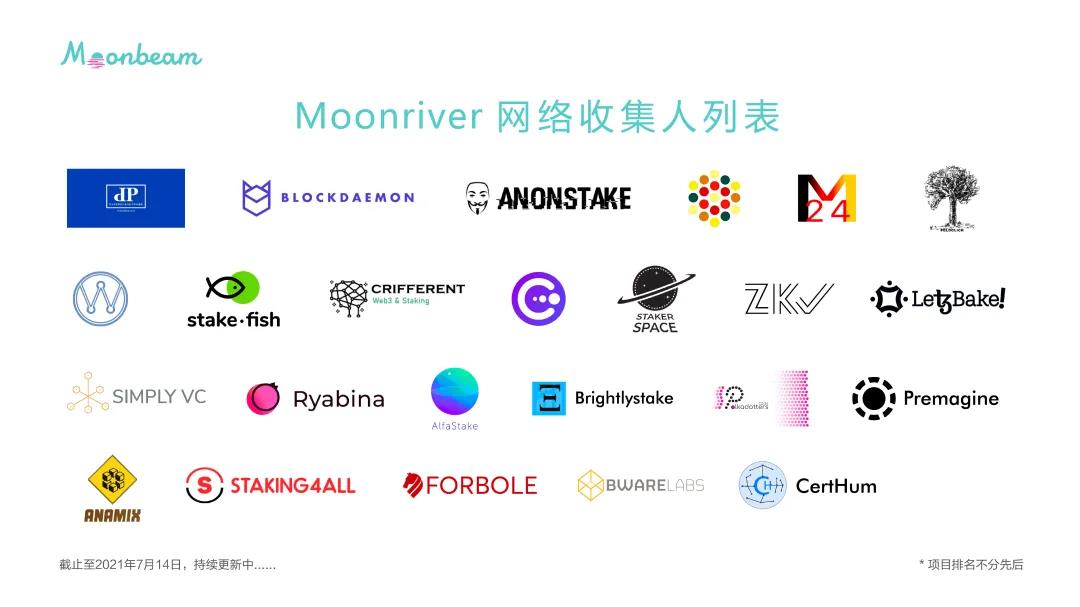 About Moonbeam
About Moonbeam
For more information, please visit:
For more information, please visit:
https://moonbeam.network/
For more information, please visit:
Moonriver is Moonbeam's peer network designed to provide a permanent testing environment for incentivized experiments. The code of the newly launched project will be deployed to Moonriver first, and undergo a series of tests and experimental verifications in its real economic environment. After the verification is completed and passed the test, the project code can be officially deployed to Moonbeam on Polkadot.
For more information, please visit:
https://moonbeam.network/networks/moonriver/
About PureStake
For more information, please visit:
For more information, please visit:
https://www.purestake.com/